After we’d purchased our tickets but before we visited the James J. Hill House in Saint Paul, Minnesota, an acquaintance described it as a “mausoleum.” Due to its ostentatious, over-sized rooms (many without furniture) that description didn’t seem unreasonable.
The Richardsonian Romanesque-style house was completed in 1891, and was built for railroad magnate James J. Hill and his large family (ten children!). It has 36,000 square feet of living space, and more than 44,500 square feet of total space. Hill spared no expense on modern technology in his new home, so the 1891 cost, with furnishings, was $1 million! During the winter they went through two tons of coal each day trying to keep all that space warm in the Minnesota cold.
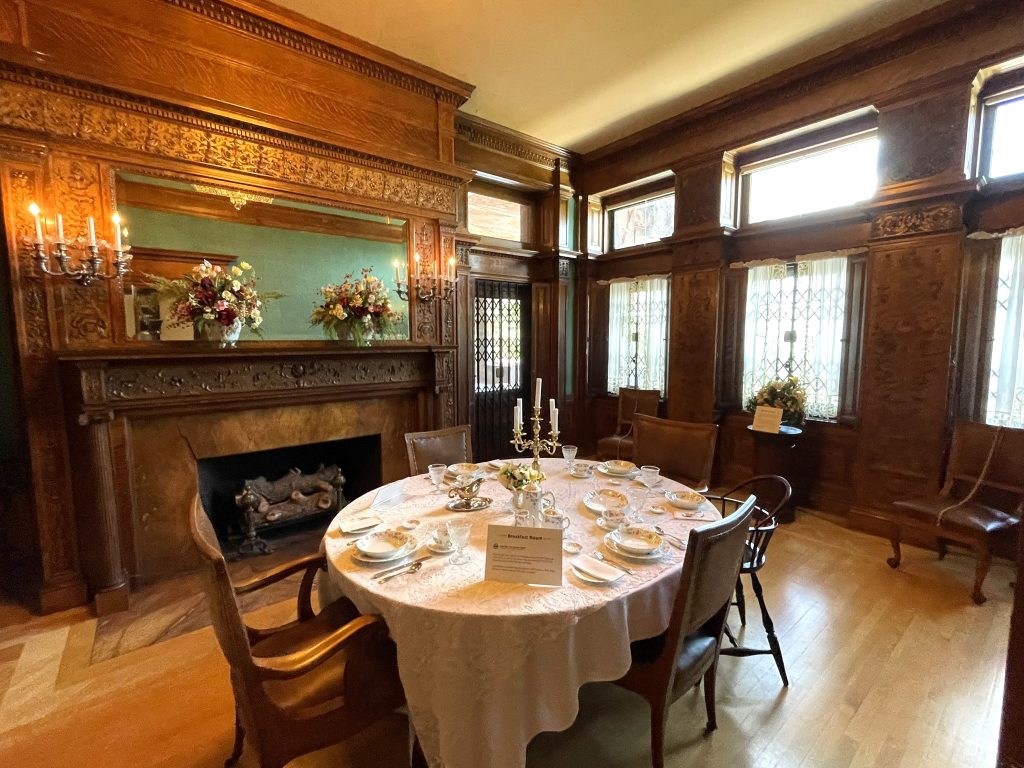
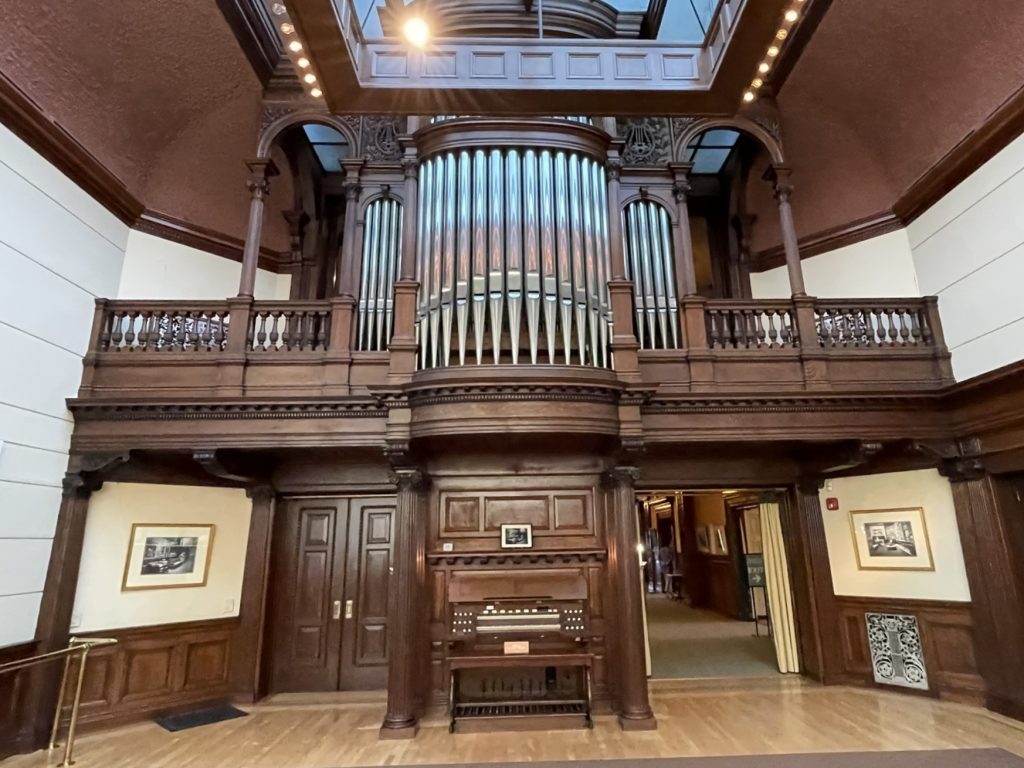
Hill was an art collector and had an art gallery included in his home. Most of the art is no longer in the home, however, as much of it was donated to the Minneapolis Institute of Art, which he helped found. The three-story pipe organ remains in place, though.
Of course, the home also included a music room, formal and informal dining rooms, a library, a drawing room, offices, a gymnasium, and much more.
There are 13 bathrooms, 22 fireplaces, and a 100-foot-long reception hall, as well.
After the Hills died (he in 1916––at which time he was worth about $1.8 billion in today’s dollars–and his wife Mary in 1921), four of the daughters inherited the home and donated it to the Roman Catholic Archdiocese of Saint Paul and Minneapolis, who used it for 53 years as residences, offices, and a teacher’s college for women. Most of the original furniture was disbursed prior to the donation or sold by the church.
In 1978, the Minnesota Historical Society acquired the home, restored it, and opened it for tours in 1985.
Fun fact: The James Hill referenced in F. Scott Fitzgerald’s The Great Gatsby is this James Hill! In reference to Gatsby, Fitz write, “If he’d of lived he’d of been a great man. A man like James J. Hill. He’d of helped build up the country.”
Doug has some more “fun facts” about Hill which you can read here.
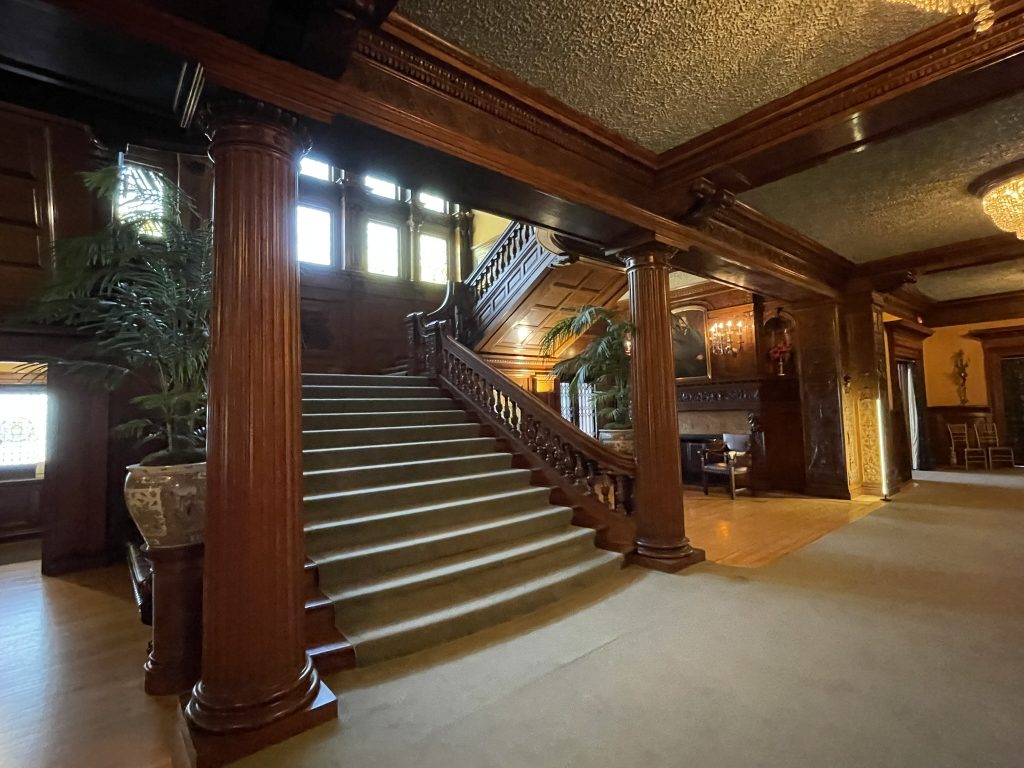
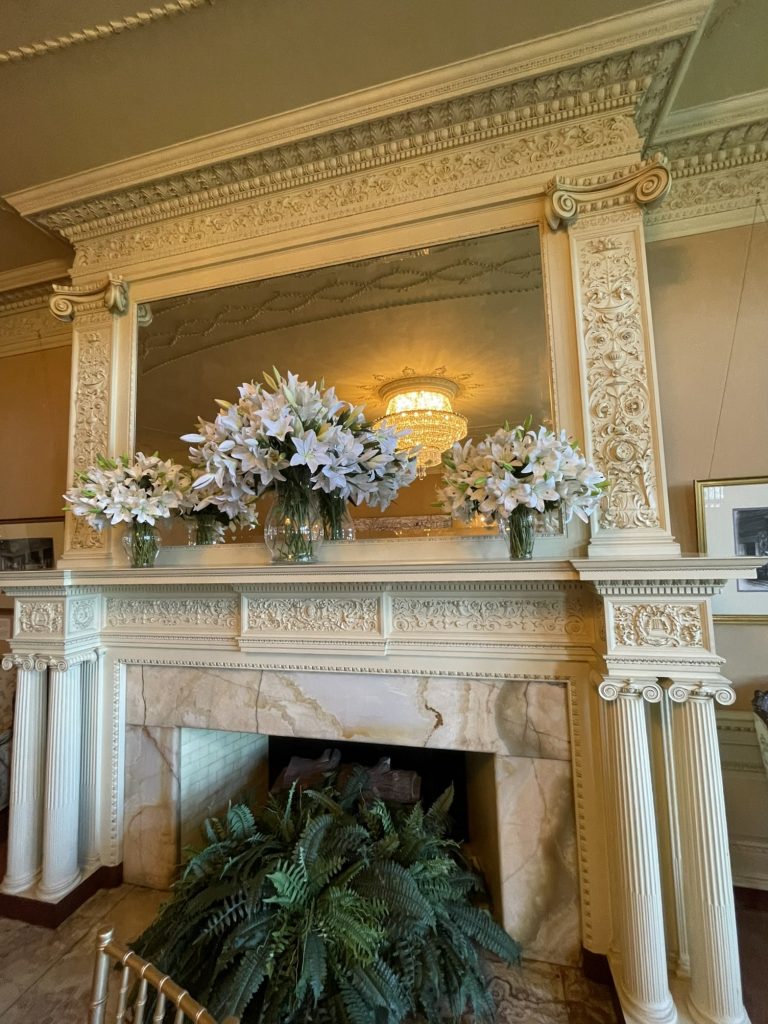
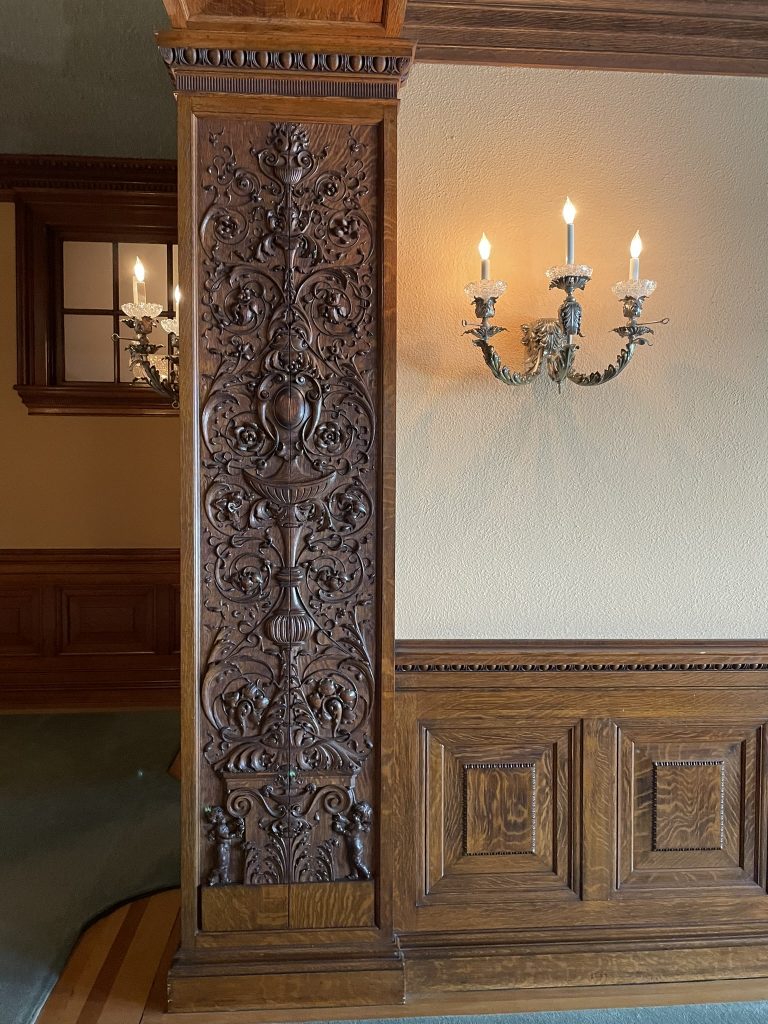
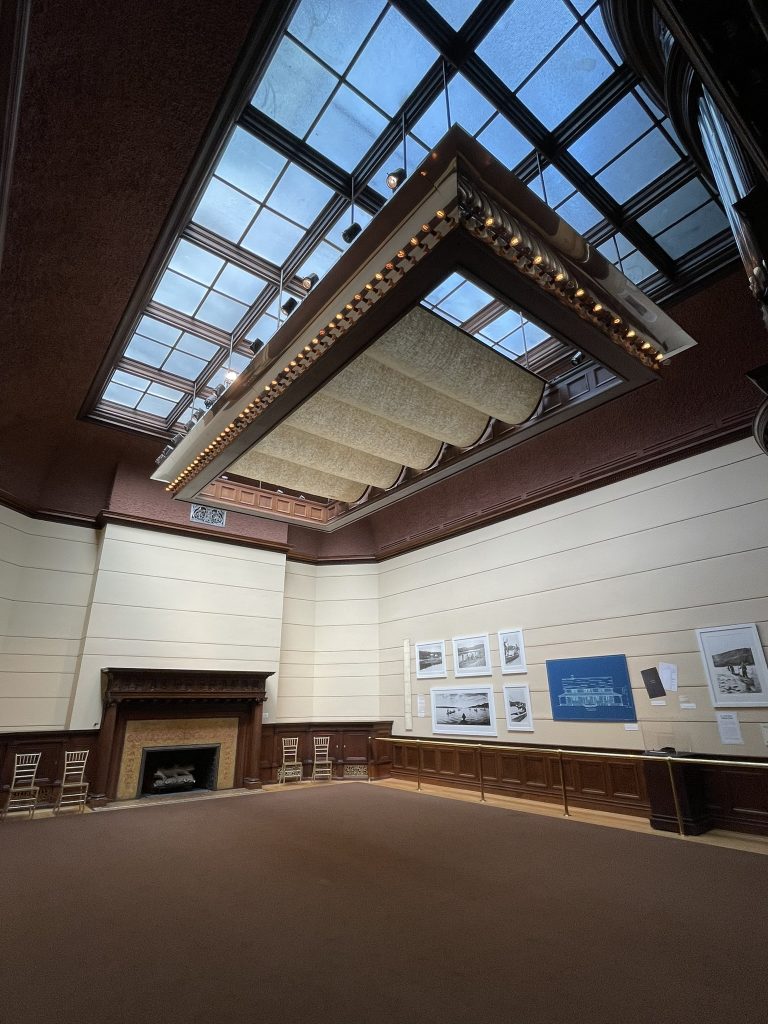
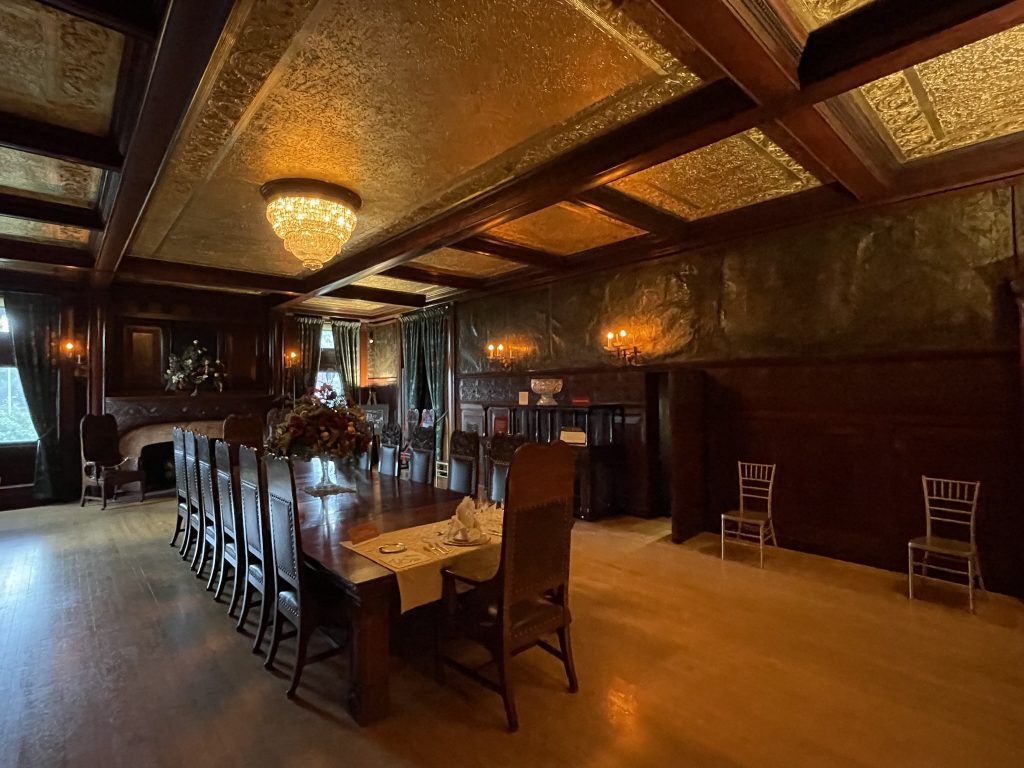
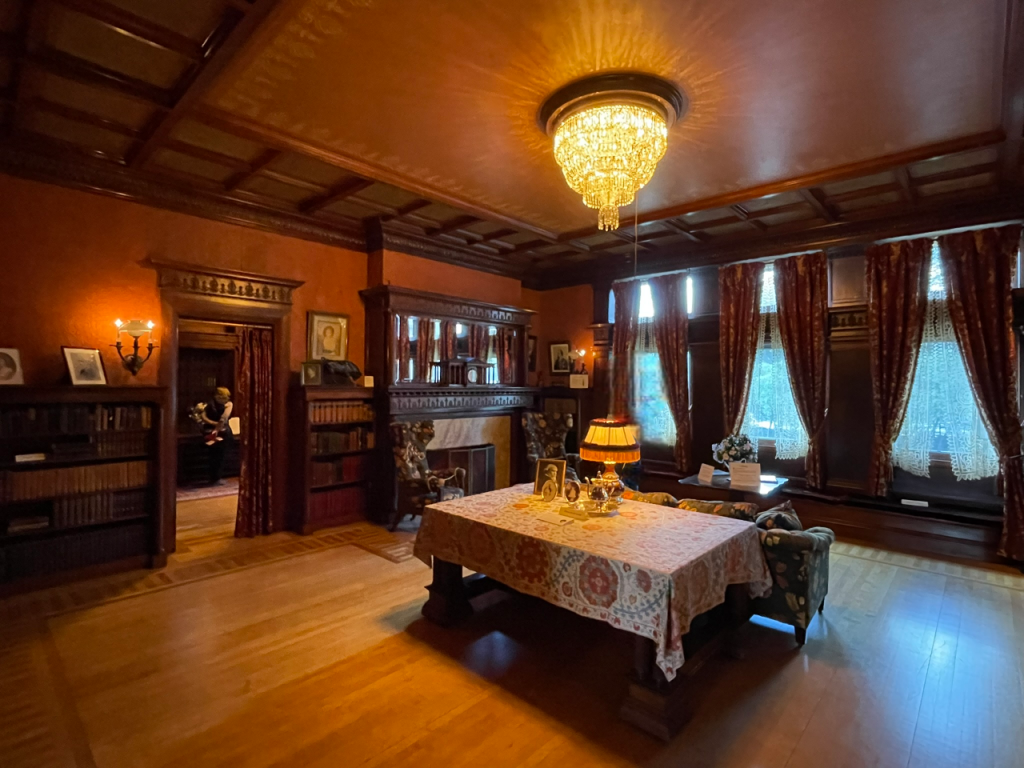
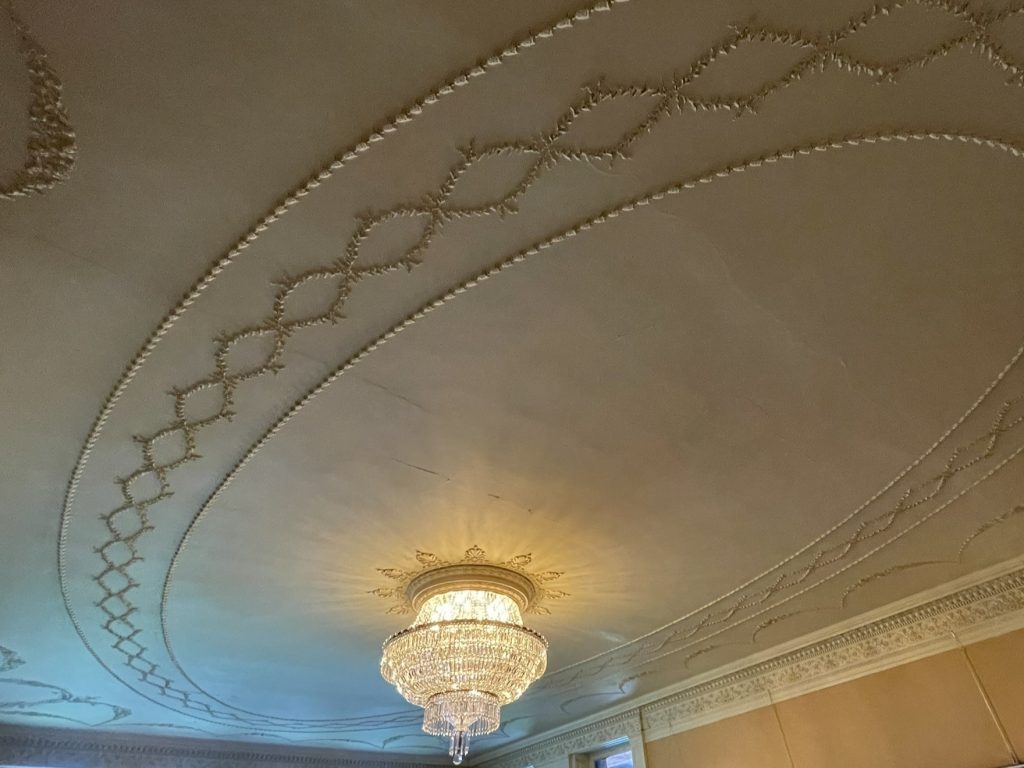
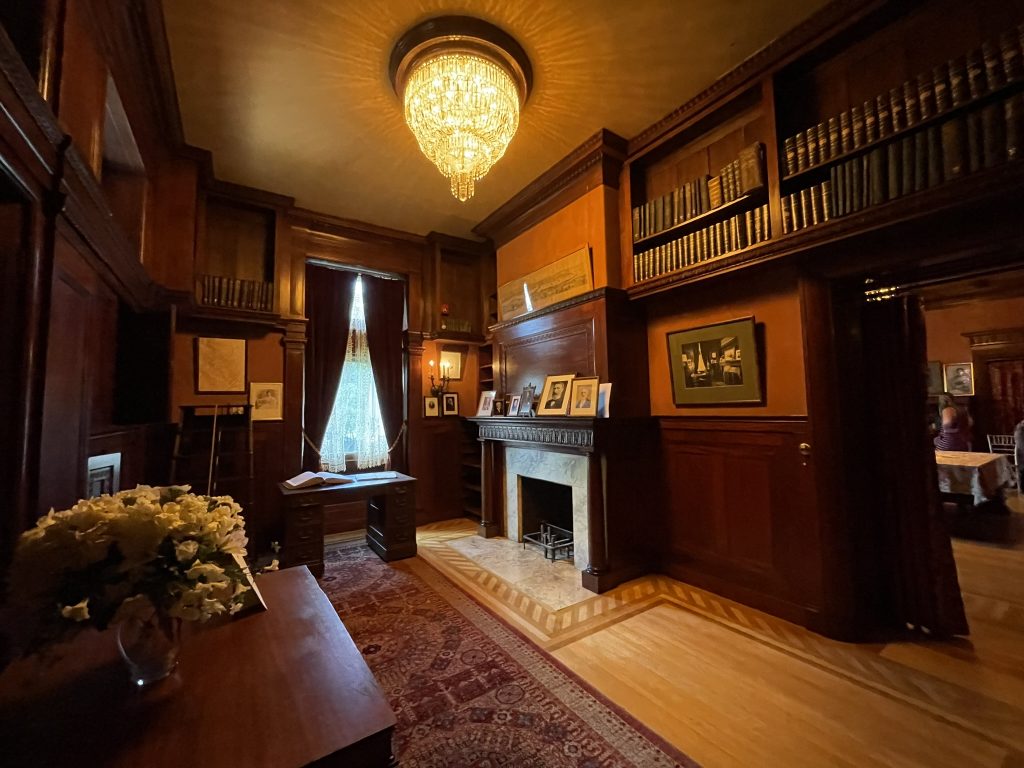
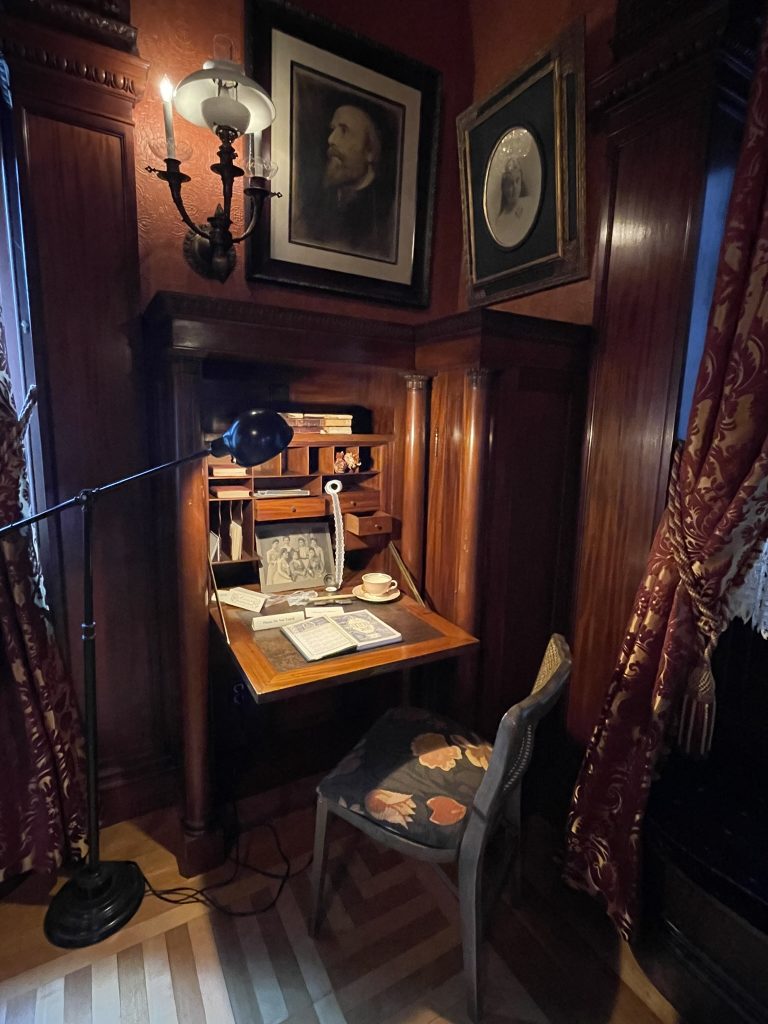

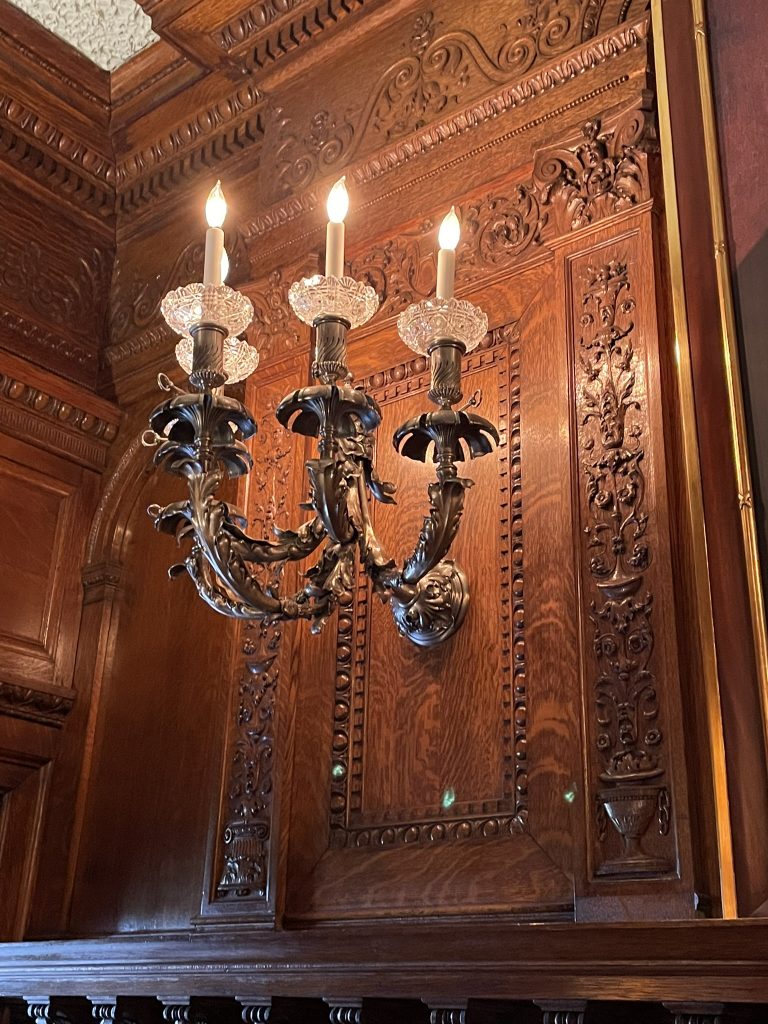







2 thoughts on “James J. Hill House”